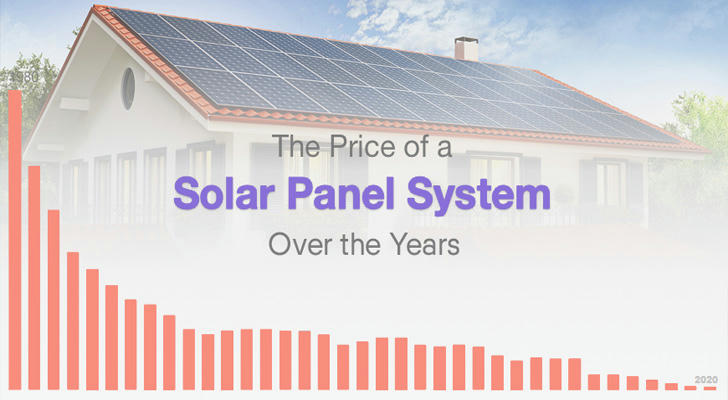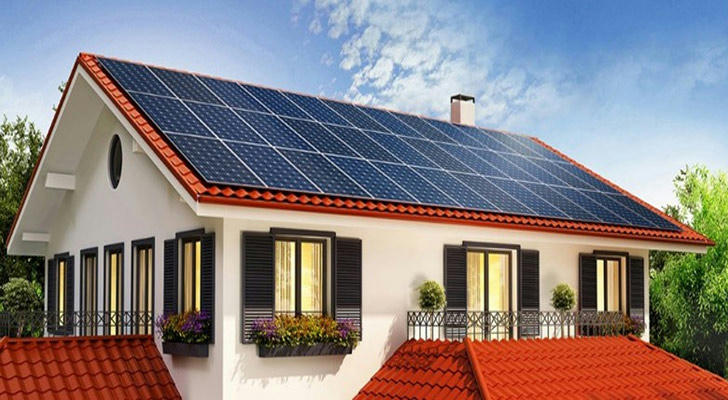✨Good News for Energy-Saving Homeowners: Solar Panel Costs Are More Affordable Than You Think
🚀 30% Tax Credit | Increase Home Value | Lower Your Electricity Bills

As energy prices continue to climb and environmental awareness grows, more and more homeowners are considering installing solar panels. Many might assume that solar systems are prohibitively expensive and out of reach. However, the truth is, the cost of solar panels is far more affordable than you might imagine, and in the long run, they can save you significant money on electricity bills, even allowing you to recoup your installation costs in just a few years. This is undoubtedly great news for homeowners looking to save energy and protect the environment.
Average Costs and Potential Savings of Solar Panels
According to data from the National Renewable Energy Laboratory (NREL), the average installed cost for residential solar panels in the U.S. is around $3.05 per watt. A typical home solar system is about 6 kilowatts, meaning installation costs could range between $12,000 and $18,000.
This might sound like a significant outlay, but don't forget the generous incentives offered by the U.S. government, such as the Federal Solar Tax Credit. From 2022 to 2032, eligible solar equipment installations can receive a 30% tax credit. This means for an $18,000 system, you could get a $5,400 tax credit, reducing your actual out-of-pocket cost to $12,600. Additionally, state and local governments may offer further rebates and incentive programs, further lowering your upfront investment.
Overview of Common Solar Panel Model Prices
The price of solar panels is typically measured in "cost per watt" ($/Watt), which includes the panel itself, inverter, mounting hardware, and labor. Prices vary for different types and power outputs of panels.
| Panel Type | Average Power Range (Watts) | Conversion Efficiency Range | Average Installed Cost Per Panel | Average Cost Per Watt ($/Watt) | Characteristics |
|---|---|---|---|---|---|
| Monocrystalline | 300 - 450+ | 15% - 22% | $120 - $200+ | $0.30 - $0.50 | Highest efficiency, smaller footprint, ideal for limited roof space |
| Polycrystalline | 250 - 350 | 13% - 17% | $80 - $150 | $0.25 - $0.40 | Lower cost, good value, suitable for larger roof areas |
| Thin-film | 100 - 200 | 6% - 15% | $50 - $100 | $0.20 - $0.30 | Flexible, lightweight, typically used for large commercial projects or specialized applications |
Return on Investment: How Many Years Until Installation Costs Are Recouped?
So, how long does it take to recoup your initial investment in solar panels through electricity bill savings? This depends on several key factors:
- Your current electricity bill amount: The higher your electricity bill, the more you save with solar, and the shorter your payback period.
- Electricity prices in your area: In areas with higher electricity rates (like California), the return on investment for solar is faster.
- Subsidies and tax credits received: Federal and local incentives can significantly shorten the payback period.
Generally, for users with larger electricity bills, the payback period can be 7 to 10 years. For those with lower bills, it might take over 20 years.
look at a specific example:
Suppose you install a 6-kilowatt solar system, with an average installed cost (including all fees) of $18,000.
After deducting the 30% federal tax credit ($5,400), your actual out-of-pocket cost is $12,600.
calculate the annual electricity savings. Assume your average monthly electricity bill is $150.
- Annual electricity savings: $150/month * 12 months = $1,800/year
calculate the payback period:
- Payback Period = Actual Out-of-Pocket Cost / Annual Electricity Savings
- Payback Period = $12,600 / $1,800/year = 7 years
This means that in this hypothetical scenario, you could recoup your solar system's installation cost through electricity savings in just 7 years.
Long-Term Benefits and Environmental Advantages
Once the initial investment is recouped, for the next 18-23 years (solar panels typically come with a 25-year warranty), the electricity you generate will significantly reduce your utility expenses, effectively creating a substantial net gain for you. For instance, over a 25-year lifespan, users in some states can realize net savings of $50,000 to $70,000.
In addition to economic benefits, installing solar panels offers significant environmental advantages:
- Reduced Carbon Footprint: Solar energy is a clean, renewable power source that can significantly reduce your reliance on fossil fuels and lower carbon emissions.
- Energy Independence: Less reliance on the grid reduces the risk posed by future electricity price increases.
- Increased Home Value: Homes with solar systems are often more attractive on the market and can increase property value.
In conclusion, the cost of installing solar panels is not as prohibitive as it might seem, and thanks to government incentives and long-term electricity savings, the return on investment is shorter than many people anticipate. For homeowners looking to lower their electricity bills and contribute to the planet, now is an excellent time to consider going solar.
Are you curious about solar installation costs and potential payback periods in your specific area?

